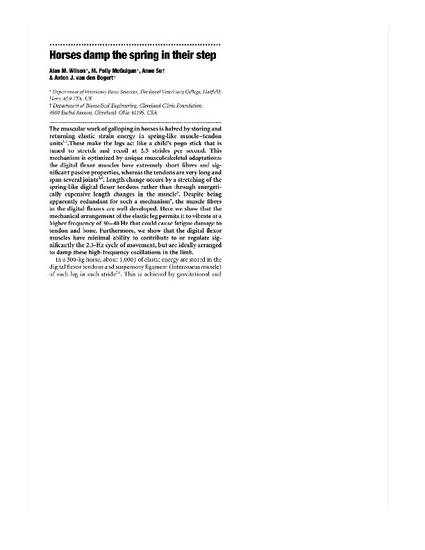
The muscular work of galloping in horses is halved by storing and returning elastic strain energy in spring-like muscle–tendon units1, 2.These make the legs act like a child's pogo stick that is tuned to stretch and recoil at 2.5 strides per second. This mechanism is optimized by unique musculoskeletal adaptations: the digital flexor muscles have extremely short fibres and significant passive properties, whereas the tendons are very long and span several joints3, 4. Length change occurs by a stretching of the spring-like digital flexor tendons rather than through energetically expensive length changes in the muscle5. Despite being apparently redundant for such a mechanism5, the muscle fibres in the digital flexors are well developed. Here we show that the mechanical arrangement of the elastic leg permits it to vibrate at a higher frequency of 30–40 Hz that could cause fatigue damage to tendon and bone. Furthermore, we show that the digital flexor muscles have minimal ability to contribute to or regulate significantly the 2.5-Hz cycle of movement, but are ideally arranged to damp these high-frequency oscillations in the limb.
